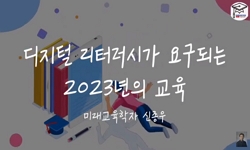본 연구에서는 MZ세대의 특징으로 자주 언급되는 디지털 리터러시, 독립적 자기해석, 도덕성 변인을 이용하여 MZ 대학생들을 유형화하였다. 또한 MZ세대가 이전 시대의 젊은이들보다 불매나...
http://chineseinput.net/에서 pinyin(병음)방식으로 중국어를 변환할 수 있습니다.
변환된 중국어를 복사하여 사용하시면 됩니다.
- 中文 을 입력하시려면 zhongwen을 입력하시고 space를누르시면됩니다.
- 北京 을 입력하시려면 beijing을 입력하시고 space를 누르시면 됩니다.

MZ세대는 누구인가?: 하위 집단별 특징에 관한 연구 = Who are the MZ generation?: A Study on Sub-group Characteristics
한글로보기https://www.riss.kr/link?id=A109590126
-
저자
남경태 (경성대학교)
- 발행기관
- 학술지명
- 권호사항
-
발행연도
2025
-
작성언어
Korean
-
주제어
MZ generation ; Digital literacy ; Morality ; Independent self-construal ; Cluster analysis ; MZ세대 ; 디지털 리터러시 ; 도덕성 ; 독립적 자기해석 ; 군집분석
-
등재정보
KCI등재
-
자료형태
학술저널
-
수록면
86-115(30쪽)
- 제공처
-
0
상세조회 -
0
다운로드
부가정보
국문 초록 (Abstract)
본 연구에서는 MZ세대의 특징으로 자주 언급되는 디지털 리터러시, 독립적 자기해석, 도덕성 변인을 이용하여 MZ 대학생들을 유형화하였다. 또한 MZ세대가 이전 시대의 젊은이들보다 불매나기부 행동에 더욱 적극적이라는 점에 착안하여 이런 행동 특성이 유형별로 어떤 차이를 보이는지비교하였다. 연구문제를 검증하기 위해 대학생들을 대상으로 2024년 3월에 온라인 설문조사를실시하였다. 총 239명의 답변을 활용하여 군집분석을 실시하였고, 워드법으로 도출된 덴드로그램을 통해 네 개의 군집수를 결정하였다. 군집별로 자기해석의 경향성, 도덕성 수준, 디지털 리터러시의 정도에 있어서 상당한 차이를 보였다. 군집1에 속한 사람들은 디지털 기술 능력이 뛰어났지만 온라인상에서 자신의 의견을 드러내려고 하지는 않았다. 상호의존적이고 소극적인 성향이라는 점에서 이들을 전형적인 MZ세대라고 하기는 어려웠다. 군집2에 속한 사람들은 가장 독립적인성향을 가지고 있었던 반면, 도덕성은 가장 낮은 것으로 나타났다. 이들은 디지털 매체를 통해온라인에서 자신의 신념이나 가치관을 표현하려는 욕구가 가장 강력한 집단이었다. 동시에 이들은 비윤리적인 기업에 대한 불매의도나 사회적 약자에 대한 기부의도는 가장 적은 사람들이기도했다. 군집3에 속한 사람들은 ‘비전형적 MZ’로 지칭될 수 있었다. 이들은 독립적인 성향이 가장낮은 집단이었고, 도덕성은 평균보다 낮았으며, 디지털 역량도 낮은 사람들이었다. 하지만 가장많은 연구 참여자들이 속해 있는 군집(33.9%)이기도 했다. 이전 시대의 젊은이들과 비교해 MZ 세대를 독립적이고, 공정성에 민감한 디지털 능력자들이라고 묘사하는 경향이 있는데 이런 설명에 가장 부합하는 집단은 군집4였다. MZ세대의 소비자들이 가치 소비 행태를 보이며 이런 행동의 일환으로 불매운동이나 기부 활동 등 사회 참여적인 행동에 적극적으로 나선다는 기존의 설명과도 가장 일치하는 사람들이었다. 하지만, 군집4에 속한 사람들은 연구 참여자들 중 27.6%에불과했다. MZ세대를 네 집단으로 분류한 본 연구의 결과를 통해 MZ세대를 하나의 전체 집단으로 이해하려는 기존의 시도는 좀 더 정교한 방식으로 개선되어야 한다는 점을 알 수 있었다.
다국어 초록 (Multilingual Abstract)
This study categorized MZ generation college students using variables frequently associated with them, such as digital literacy, independent self-construal, and morality. Additionally, based on the observation that MZ generation is more proactive in b...
This study categorized MZ generation college students using variables frequently associated with them, such as digital literacy, independent self-construal, and morality. Additionally, based on the observation that MZ generation is more proactive in boycotting and charitable actions compared to previous generations, it examined how these behavioral traits differ by group. To validate the research questions, an online survey was conducted in March 2024, targeting college students. A total of 239 responses were used for cluster analysis, and the dendrogram derived from Ward's method determined four clusters. Each cluster showed significant differences in tendencies of self-construal, levels of morality, and degrees of digital literacy. Cluster 1 consisted of individuals with strong digital skills but who were not inclined to express their opinions online. Their interdependent and passive nature made it difficult to categorize them as typical MZ generation members. Cluster 2 had the most independent tendencies and the lowest morality. This group had the strongest desire to express their beliefs and values through digital media. At the same time, they were the least likely to engage in boycotts against unethical companies or show intent to donate to vulnerable populations. Cluster 3 could be referred to as the ‘untypical MZ.’ This group was the least independent, had lower-than-average morality, and also exhibited low digital competency. However, it was the largest group, comprising 33.9% of the participants. Compared to previous generations, there is a tendency to describe the MZ generation as independent, sensitive to fairness, and digitally skilled individuals, and the group that best fits this description was Cluster 4. They also most closely aligned with the existing explanation that MZ generation consumers engage in value-driven consumption, participating actively in social actions like boycotts or charitable activities. However, only 27.6% of the participants belonged to this group. The findings of this study, which classified MZ generation into four distinct groups, indicate that previous attempts to understand the MZ generation as a single unified group need to be refined with more nuanced approaches.
동일학술지(권/호) 다른 논문
-
디지털 조력자가 고령층의 디지털 격차와 삶의 만족도에 미치는 영향 : 세대구성유형을 중심으로
- 부산울산경남언론학회
- 권하나
- 2025
- KCI등재
-
OECD 통계는 우리 사회와의 비교 잣대로 어떻게 활용되고 있는가: OECD가 인용된 언론보도에 대한 텍스트 마이닝 분석
- 부산울산경남언론학회
- 양혜승
- 2025
- KCI등재
-
온라인 대화에서 메시지 교감성 개념 구축 및 영향 요인에 관한 연구
- 부산울산경남언론학회
- 박현구
- 2025
- KCI등재
-
국가기간뉴스통신사와 기후변화: <연합뉴스>의 기후변화 보도 분석
- 부산울산경남언론학회
- 김천수
- 2025
- KCI등재




 DBpia
DBpia






